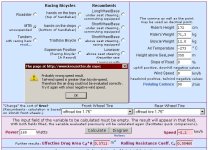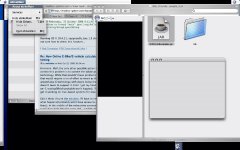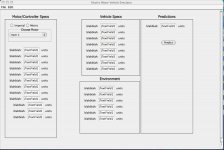Miles said:swbluto said:Mine heads towards 100% as you approach the no-load speed and then it crashes to negative infinity at the no-load speed(no motor power output, in other words), whereas ebikes.ca's simulator seems to approach optimal efficiency shortly before the no-load speed and then takes a sharp curve downward. I've heard that the closer you are to the no-load speed, the better the efficiency, so maybe my calculation is more accurate? :lol: ).

Seems like it's not factoring in the no load torque? The curve should start to turn down at around 10% of no load speed, for BLDC motors.
I was going to take a closer look at that. It doesn't directly do the Torque = I*k - (windage_torque and other counteracting torque which ebikes.ca does a second order approximation on) calculation, but it's a direct mathematical recreation of the CA's simulator torque curve when the only resistance present is in the motor and there is effectively no battery-current limit. So assuming *that* torque curve factored in the windage torque(and what not) already, it seems like further calculations based on that should remain equally replicated. But it doesn't(Just fairly accurately so for most parameters over the normal operating range)...
Custom values don't even account for the windage torque and motor cogging, though, which can be important(The effect is usually negligible, until you start calculating efficiency near the no-load speed.). The problem mainly is that it requires "special tools" to directly measure, which most potential users don't have, and manufacturers/retailers don't be seem to be keen about giving this data. Maybe this can be inferred from the "no load current" that's sometimes given by retailers/manufacturers? Are there any known "motor cogging and windage torque" relationships or rules-of-thumb that'd make it simple to estimate?
Eh. It just seems like this data can't be too easily found by a normal user(Including me, rofl).




